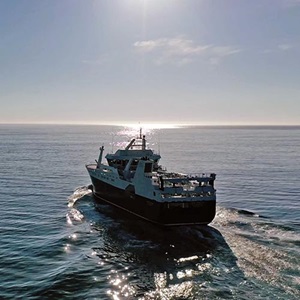Fisheries often need to improve their environmental performance before they can achieve MSC certification, including reducing impacts on endangered, threatened and protected species.
MSC Biodiversity and Climate Change Analyst Sandra Ougier is leading a study into different types of improvements fisheries make to reduce impacts on such species as they work towards meeting the MSC Fisheries Standard. The study will also identify the factors that drive progress towards protecting biodiversity in these fisheries.
Fishing activities that are not well managed can harm marine habitats and ecosystems. Species such as birds, mammals and reptiles may become entangled in fishing nets and ropes, accidentally caught (bycatch), or experience a loss of food source or habitat.
This can have a particularly significant impact on species considered endangered, threatened and protected (ETP). Such species are defined by national or regional legislation, and international agreements and conservation risk assessments such as the International Union for Conservation of Nature (IUCN) Red List.
The research challenge
To meet the MSC Fisheries Standard and achieve certification, fisheries must ensure their interactions with ETP species are carefully managed and do not harm the species’ ability to recover.
However, fisheries often lack data on their interactions with ETP species and may not have systems in place to monitor such interactions and impacts.
To make the changes needed to meet our Standard, many fisheries take part in multi-stakeholder fishery improvement projects (FIPs). While FIPs can vary in scope and quality, they can be an effective way for fisheries to work towards sustainable practices, including reducing impacts on ETP species.
To date, most research into the improvements made by FIPs has focused on stock status rather than impacts on biodiversity. The lack of data makes it harder to design improvement projects that more effectively address ETP issues.
Through our study, we want to identify the actions taken by fisheries in FIPs to reduce impacts on ETP species, and the factors that enable progress to be made.
Studying FIP data
We are using publicly available data from fisheries listed on fisheryprogress.org, the leading platform used by FIPs to report and track their progress. This includes data from pre-assessment reports and action plans, and data on fishery characteristics such as target species, gear type, vessel length and location. We are also analysing how the FIP is being implemented, including the different stakeholders involved.
Our analysis will only consider 'comprehensive' FIPs: those committed to making the improvements needed to meet the MSC Fisheries Standard.
As of September 2024, 264 fisheries had voluntarily listed their improvement project on fisheryprogress.org. Of these fisheries, 208 (76%) had issues relating to ETP species. We are currently analysing a subset of 68 fisheries that have ETP issues and completed a pre-assessment before 2019.
What are the impacts?
Outcomes from this study could be used to inform FIP implementors of the most effective initiatives for reducing ETP impacts. Our findings could also support the introduction of better practices to help maintain marine biodiversity.
Find out more about our research

What drives fishery improvements?
A study of the factors and incentives that drive improvements in fisheries seeking MSC certification.

Assessing climate risks
Identifying where predicted climate impacts threaten fisheries' ability to meet the MSC Fisheries Standard.

Managing shifting stocks
Investigating how to adapt fishery management policies in response to a changing climate.
